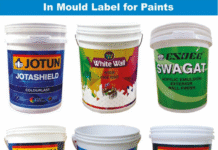“We have been building machines that are ATEX compliant for more than 10 years, so we can comment from a position of authority,” said Anders Kongstad, technical director at the Danish manufacturer. To understand the background one has only to look at the meaning of
ATEX – it’s an acronym for ‘Atmospheric Explosion’ and a reminder of how potentially dangerous the solvents and flammable liquids that are used in the printing process can be. No wonder then that it has been the subject of an EU Directive (94/9-EC) since 1996.
Flexo Wash began by building the pneumatic style because they were simple ‘plug-in and play’ machines that required little maintenance and were easy to run. But a reliance on compressed air, which can be expensive or difficult to source in certain countries, combined with the lower washing pressure, means that for most converters the way forward is electric power. More complex and expensive, and with a requirement to cool the solvent in the tank that has been heated by the energy generated by the electricity, these machines do however run with a higher pressure wash cycle, and are consequently more effective.
“Upto 2011 we manufactured only pneumatic machines and currently have more than 100 machines installed worldwide. Since then, we have installed a good number of electric machines and will add substantially to that numberin2015,” said Kongstad. The extra power of an electrical system is particularly useful to gravure printers, where the parts require a more arduous cleaning process. It can also offer a short high-intensity wash programme
with the PLC unit integrated with the ventilation system and the distiller. According to Flexo Wash, this carries a higher initial price tag, but the payback period is shorter too.
The switchover from pneumatic to electrical caused some confusion in the market about compliance. “Pneumatic systems do not need to be certified by TÜV Nord, so people assumed they did not comply, but this was never the case as the directives distinguish between the electrical and non-electrical systems. The two different types of systems need to comply with different types of approvals. Flexo Wash has implemented an extensive quality management system to handle the requirements for building ATEX machines. All units have compliance via QC management and a QC system that is audited each year,” he explained, adding that in any 12-month period there are usually five or six updates to the applicable standards, which is a bit like trying to hit a moving target. In 2014 a draft of new ATEX directives was issued, which require compliance by April 2016, though Kongstad said that these relate less to the manufacturers within the EU, and more to those selling in the EU.










